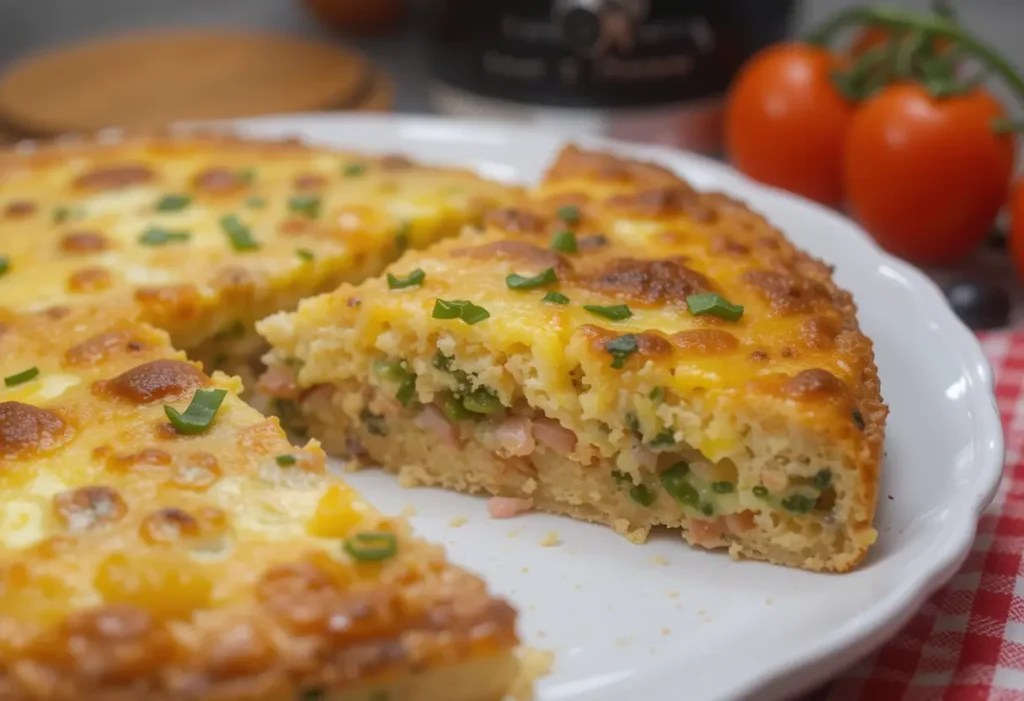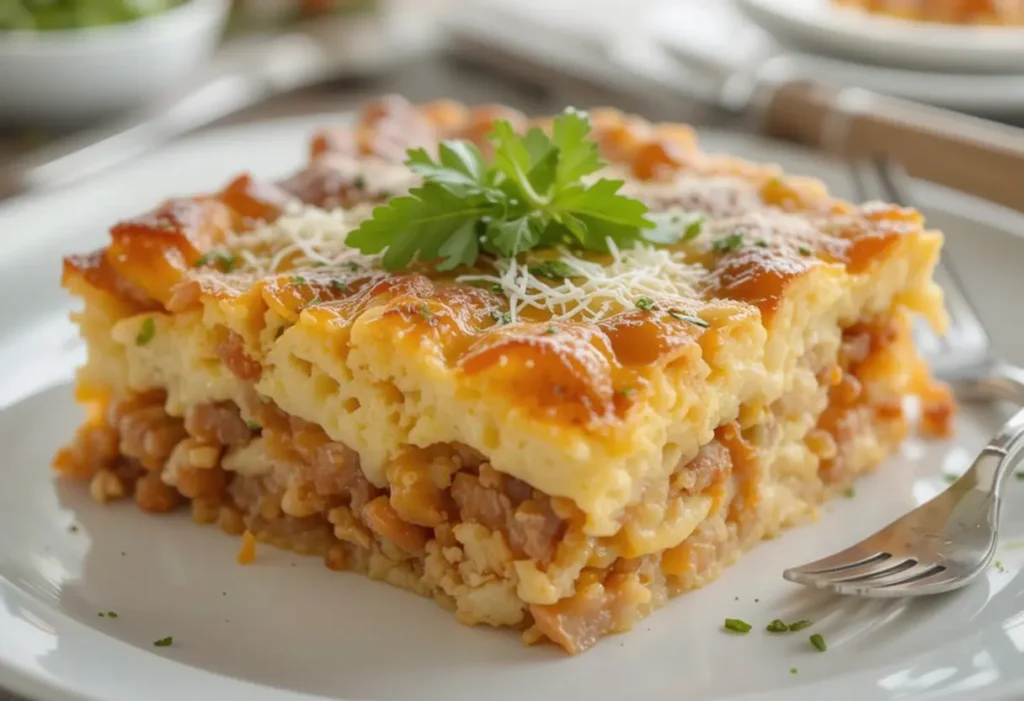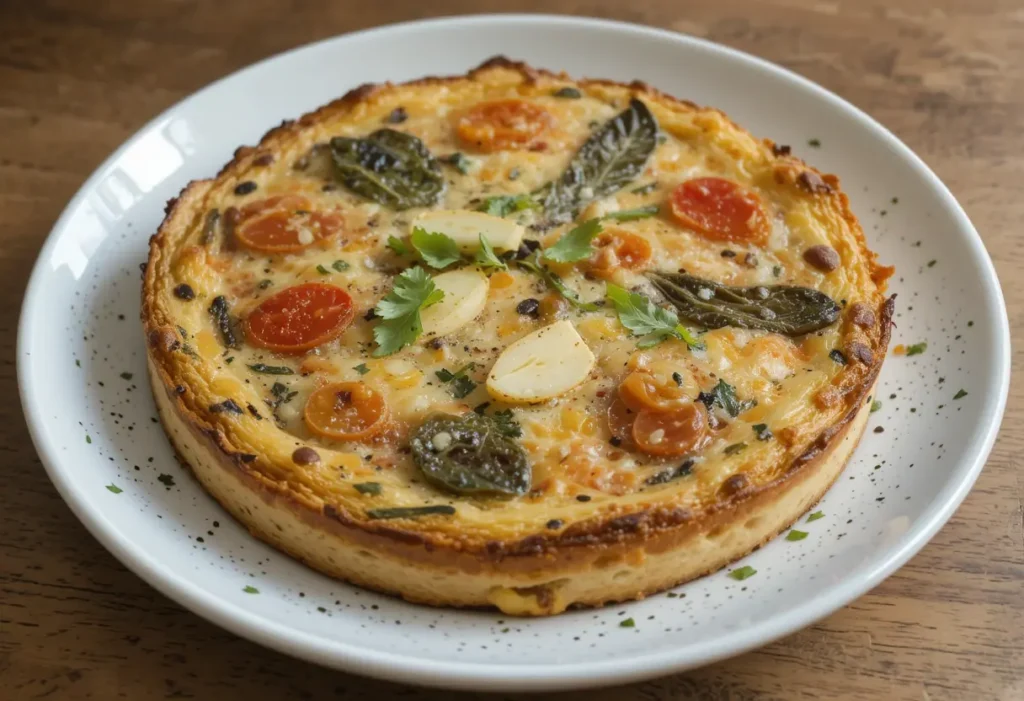When it comes to hearty egg-based dishes, strata and frittata are two popular options. Both use eggs, bread, and various fillings. However, they differ significantly in preparation, ingredients, and origin. In this article, we’ll explore these differences. By the end, you’ll know when to make a strata and when a frit.tata is the better choice.
What is a Strata?
A strata is a savory bread pudding. It’s typically made by layering bread with eggs, cheese, and ingredients like vegetables, meats, and herbs. You assemble the dish ahead of time and bake it until golden brown. A strata is similar to a casserole, which makes it a great choice for brunches, holidays, or family gatherings.
Key Characteristics of Strata
- Bread base: A strata uses chunks of stale bread. The bread soaks up the egg mixture, creating a soft, pudding-like texture after baking.
- Layered structure: You layer the bread with cheese, vegetables, meats, and sometimes potatoes. This creates a multi-layered dish with varied flavors.
- Overnight preparation: You can prepare a strata the night before. This allows the bread to absorb the egg mixture, which enhances flavor.
- Baked casserole style: Unlike a frit.tata, which you cook entirely on the stove, a strata is baked in the oven. The result is a firm, crisp exterior.
For more ideas on similar baked egg dishes, check out the strata eggs recipe. It provides inspiration for customizing your strata with different fillings.

What is a Frittata?
A frit.tata is an Italian-style omelet. You cook it on the stovetop and finish it under the broiler. Unlike a strata, a frittata doesn’t use bread. Instead, it’s an egg-based dish with fillings mixed in and cooked together.
Key Characteristics of Frittata
- No bread: A frittata is lighter than a strata because it doesn’t contain bread.
- Cooked on the stovetop: You cook the base of the frittata on the stovetop until the eggs set. Then, you finish it under the broiler to create a golden top.
- Vegetable and meat fillings: A frittata often contains vegetables, meats, and cheese. You mix them into the eggs.
- Quick and easy: Frittatas cook faster than stratas and don’t require overnight preparation. They are ideal for a quick meal.
To learn more about how to cook a frittata, check out this resource on how to cook a chicken Gordon Ramsay style. It explores techniques that can also apply to frittatas.
Key Differences Between Strata and Frittata
| Feature | Strata | Frittata |
|---|---|---|
| Main Ingredient | Bread and eggs | Eggs and fillings (no bread) |
| Cooking Method | Baked in the oven | Cooked on the stovetop, then broiled |
| Texture | Soft, custard-like with crispy edges | Dense, firm with a smooth texture |
| Preparation | Often prepared the night before | Can be made in 30 minutes or less |
| Best for | Brunches, holidays, gatherings | Quick meals, light dinners |

Understanding these differences helps you choose the right dish for your meal. Whether you’re hosting a brunch or craving a quick dinner, both dishes offer flexibility with ingredients and are sure to satisfy.
FAQs
What is the difference between a strata and a casserole?
A strata contains bread as the main component. A casserole, on the other hand, can include a variety of starches like potatoes, pasta, or rice. Also, stratas are more egg-based.
Can you make a frittata without cheese?
Yes! You can make a frittata without cheese. This is a good option for a lighter meal or if you’re lactose intolerant. Simply add extra vegetables or meats for flavor.
Can you make a strata ahead of time?
Yes! Making a strata the night before is actually a great idea. It allows the bread to soak up the egg mixture, which enhances the flavor. You can bake it the next morning for a convenient and delicious brunch option.
When to Serve Strata vs. Frittata
- Strata: Best served for a crowd or when you want to prepare a meal in advance. Its layers and savory fillings make it perfect for brunch or holiday gatherings.
- Frittata: Ideal for a quick, customizable meal. It’s perfect for a busy weekday breakfast or dinner when you want something easy and satisfying.
Conclusion
Knowing the difference between a strata and a frittata helps you decide which dish is right for your next meal. Whether you prefer the hearty layers of a strata or the quick simplicity of a frittata, both dishes offer endless possibilities for creativity with fillings and flavors. Next time you have to choose between these two egg-based dishes, consider your time, ingredients, and the occasion.


2 thoughts on “What is the Difference Between a Strata and Frittata?”
Comments are closed.